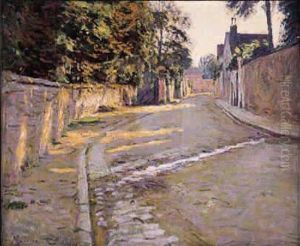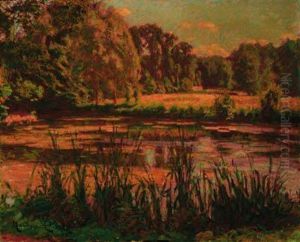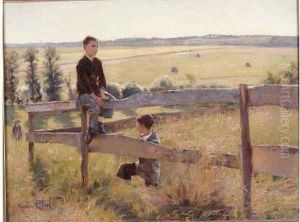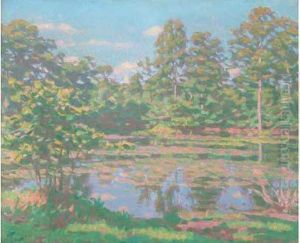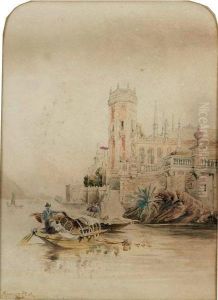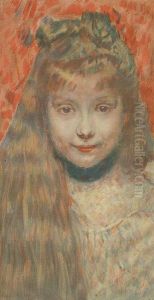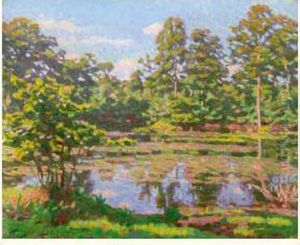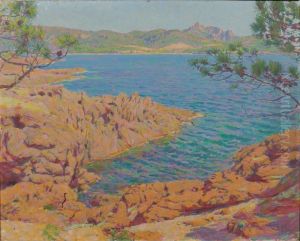Maurice Eliot Paintings
Maurice Eliot, born in 1864 and passing away in 1945, was a French artist whose contributions to the art world spanned across painting, illustration, and teaching. His career was marked by a dedication to exploring the nuances of light and landscape, often reflecting the traditions of French Impressionism, yet he also ventured into the realms of decorative arts and design, showcasing a versatile talent that was recognized and celebrated in his time.
Eliot's journey in the arts began with his education at the École des Beaux-Arts in Paris, where he studied under renowned artists such as Léon Bonnat and Fernand Cormon. This rigorous training provided him with a solid foundation in the techniques and disciplines of traditional art, which he would later blend with more modernist impulses. Early in his career, Eliot found himself drawn to the landscapes and rural scenes of France, capturing the changing seasons and the play of light with a sensitivity that became a hallmark of his work.
Throughout his career, Maurice Eliot exhibited his work in various salons and galleries, gaining recognition and accolades for his contribution to French art. Notably, his landscapes and scenes of daily life in rural France were celebrated for their vibrant color palette and dynamic compositions, reflecting the influence of Impressionism but also signaling a unique stylistic approach. Eliot's ability to evoke mood and atmosphere through his choice of subjects and his delicate handling of light and color made his works particularly appealing to collectors and critics alike.
Beyond his achievements as a painter and illustrator, Maurice Eliot was also committed to the education of future artists. He taught at several institutions, sharing his knowledge and passion for art with young students. His teaching philosophy emphasized the importance of observation and the study of nature, encouraging his students to develop their own unique styles while grounding their work in solid technical skills.
Despite the changing trends in art during his lifetime, Eliot remained true to his vision, continually exploring and experimenting within the parameters of his chosen genres. His legacy is not only in the beauty and quality of his own work but also in the influence he had on his students and the broader art community. Maurice Eliot's contributions to the landscape of French art were recognized with various honors throughout his life, and today, his works can be found in museums and private collections, continuing to inspire admiration and study for their technical mastery and emotional depth.
Maurice Eliot's death in 1945 marked the end of a prolific career that had spanned the challenging transitions of art from the late 19th century through the early 20th century. His dedication to capturing the essence of the French landscape, coupled with his commitment to education and the arts, ensured that his legacy would endure, making him a respected figure in the annals of French art history.
